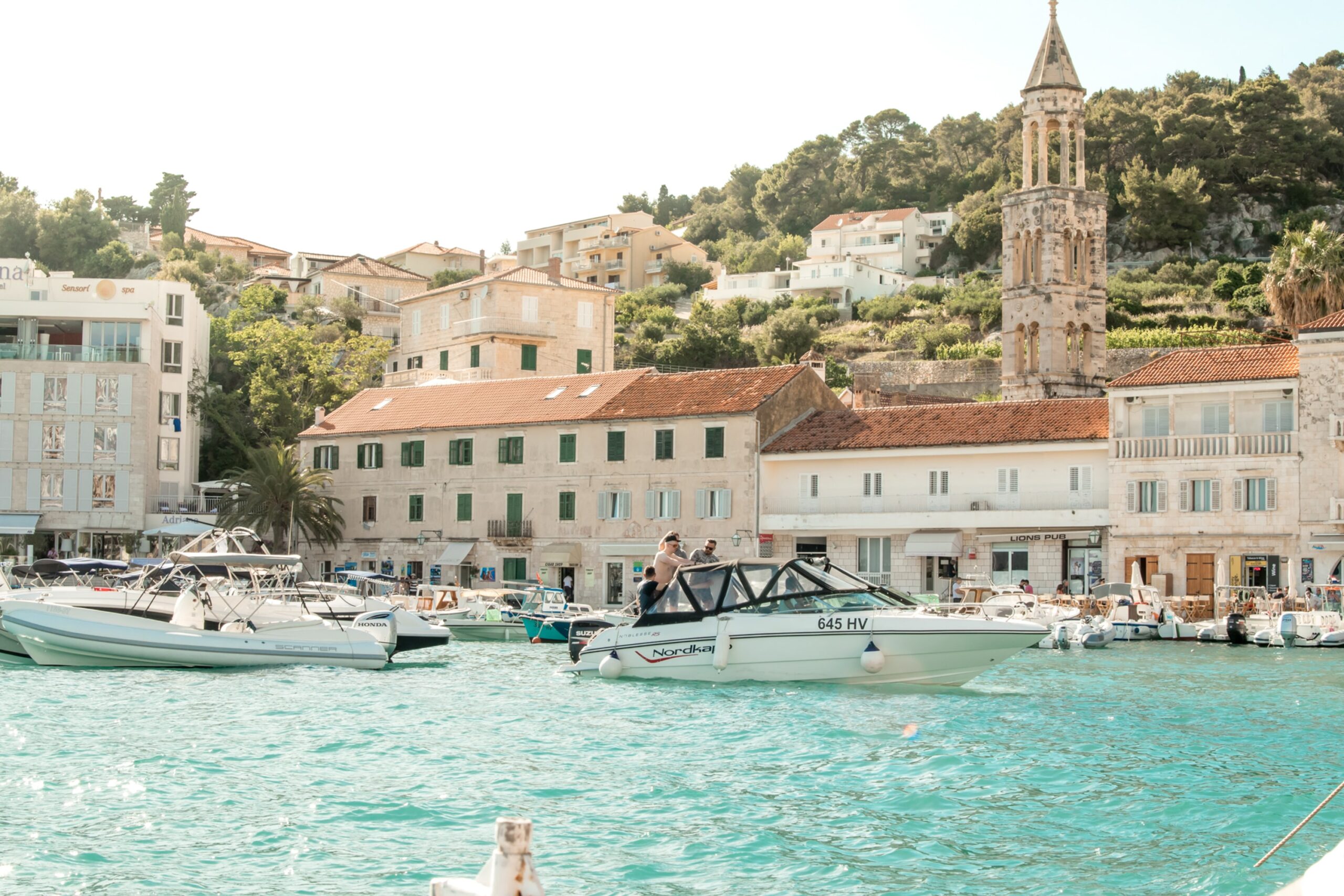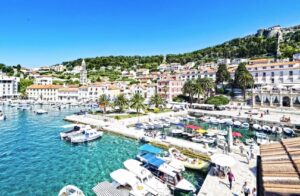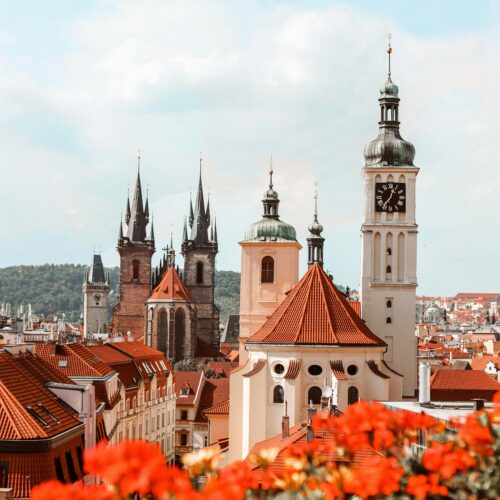Sun-kissed Shores, Sizzling Souvlaki, and So Much More: Uncovering the Magic of Hvar!

by Stefanie Michaels
Hvar is an island in the Adriatic Sea, located in Croatia. A part of the islands of Dalmatia, it is known for its beaches, clear waters, and Mediterranean climate. It is the longest island in the Adriatic Sea and has a tulmulchuous history dating back to ancient times.
Croatia declared independence from Yugoslavia on June 25, 1991. This followed a period of political turmoil and war in Yugoslavia as various ethnic groups sought greater autonomy and independence.
Croatia and the Dalmatian Islands were finally recognized as an independent country on January 15, 1992, by the international community.

These days, it’s known for its nightlife, especially in the town of Hvar, and is considered one of the most popular party spots in Croatia. It also boasts historic sites like St. Stephen’s Square and the fortress Spanjola.
Its picturesque villages, many outdoor activities like hiking, windsurfing, and sailing, high-end resorts, and its wine and lavender production make this isle incredible.
The island is also known for its many festivals, including Hvar Summer Festival, an annual event featuring concerts, theater performances, and dance parties.
Their Film Festival takes place in June, Hvar Sailing Regatta happens in June and July. Their Lavender Festival is held in July, featuring tastings, workshops, and other events, and Wine Fest is in September.
8Great Things to do and See:
Visit the historic St. Stephen’s Square: In the town of Hvar, it is home to several important buildings and monuments.
Explore the medieval fortress: Spanjola, which offers panoramic views of the island and the surrounding sea.
Beach Time: Head to on one of the island’s many beautiful beaches, such as Dubovica, Jerolim, or Sveta Nedelja.
Take a boat tour: Explore the Pakleni Islands, known for their crystal-clear waters and secluded beaches.
Hike: The island’s rugged interior offers scenic views and a chance to see local wildlife.
Visit the Franciscan Monastery: This art collection dates back to the 14th century.
Take a wine-tasting tour: Sample local wines like the Hvar Plavac Mali or Bogdanusa.
Visit the lavender fields: On the island, learn about the traditional method of growing and harvesting lavender.
Let’s talk Food!
Italy has influenced the cuisine of Hvar. Since the island shares the Adriatic Sea with Italy, it has a long history of trade and cultural exchange with the Italian coastal cities.
This has resulted in incorporating Italian flavors and cooking techniques into the local cuisine. For example, the use of olive oil and tomato sauce in dishes like “Paste s Rakom” can be traced back to Italian influence.
The local wine “rak” is also similar to the Italian “Grappa” in production and taste. The Italian influence has had a significant impact on the cuisine, and it continues to play an essential role in the local culinary culture.
Their signature dish is “Pastes Rakom.” It is a pasta dish made with homemade pasta, “rak” (local wine), olive oil, and tomato sauce.
The dish is considered delicious because of the combination of local ingredients, the simplicity of preparation, and the unique flavor that results from using “rak” in the sauce.
The homemade pasta and fresh ingredients enhance the flavor, making it a local specialty that is both delicious and representative of the island’s culinary heritage.
Besides “Pastes Rakom,” there are several other dishes that are specific to the island of Hvar, Croatia.

Dolma Hvarska – stuffed vegetables, usually grape leaves or bell peppers, with a mixture of rice, herbs, and sometimes minced meat.
Paski Sir – a type of sheep cheese made from sheep’s milk, produced on the island and known for its distinctive sharp and salty flavor.
Jota – is a hearty stew made with beans, potatoes, sauerkraut, and sometimes with meat.
Hvarska Pasticada – a slow-cooked beef stew made with prunes, onions, garlic, and red wine.
Hvarska Grilled fish – fresh fish grilled over an open flame, often served with a side of grilled vegetables.
These dishes are all made with local ingredients and reflect the unique culinary traditions of the island.
TIP: The people of the island are called Hvartani or Hvarci in Croatian. The official language of Croatia is Croatian.—a Slavic language closely related to other Slavic languages such as Slovenian, Serbian, and Bosnian.
The currency used in Croatia is the Croatian Kuna (HRK).



